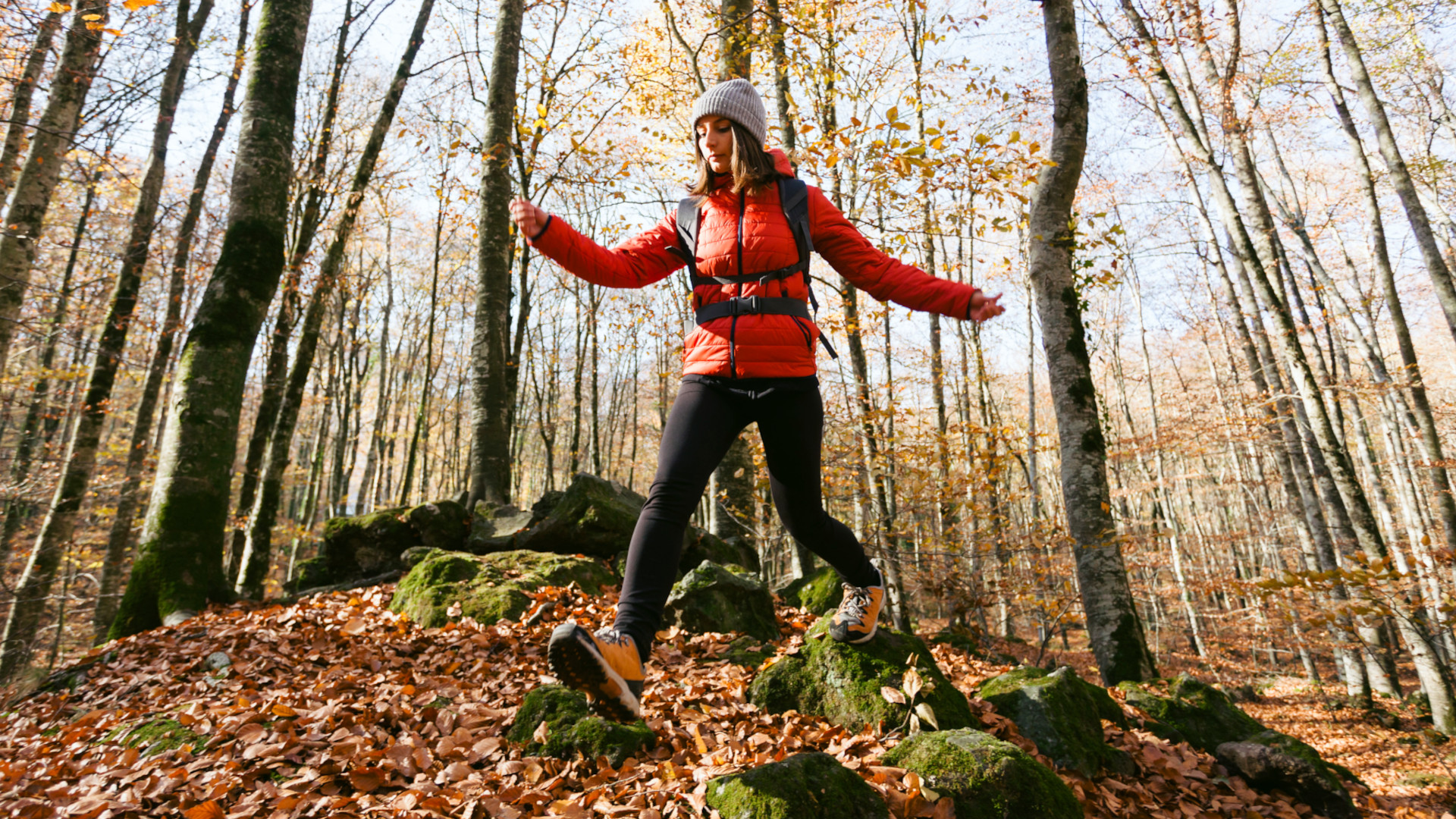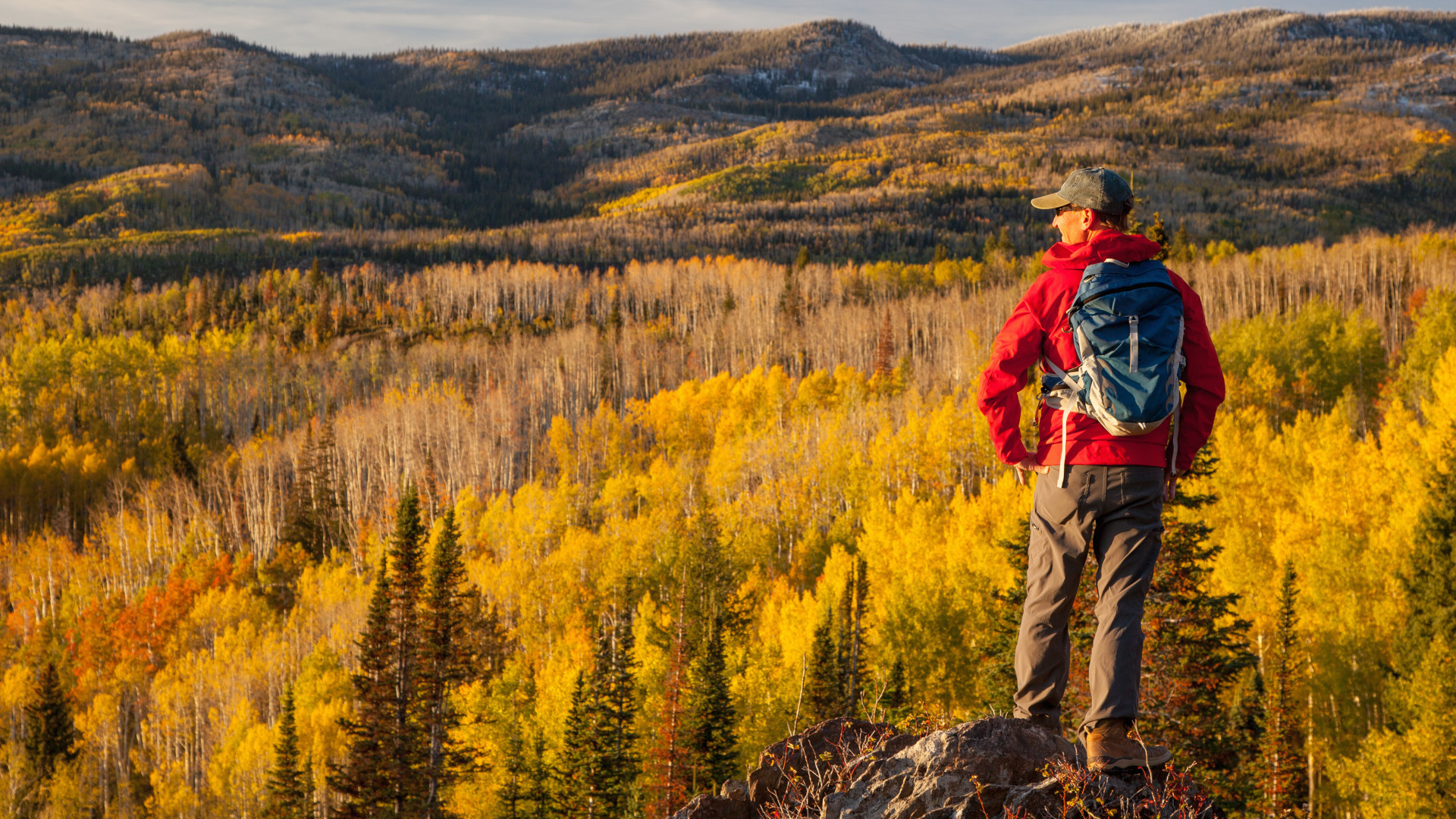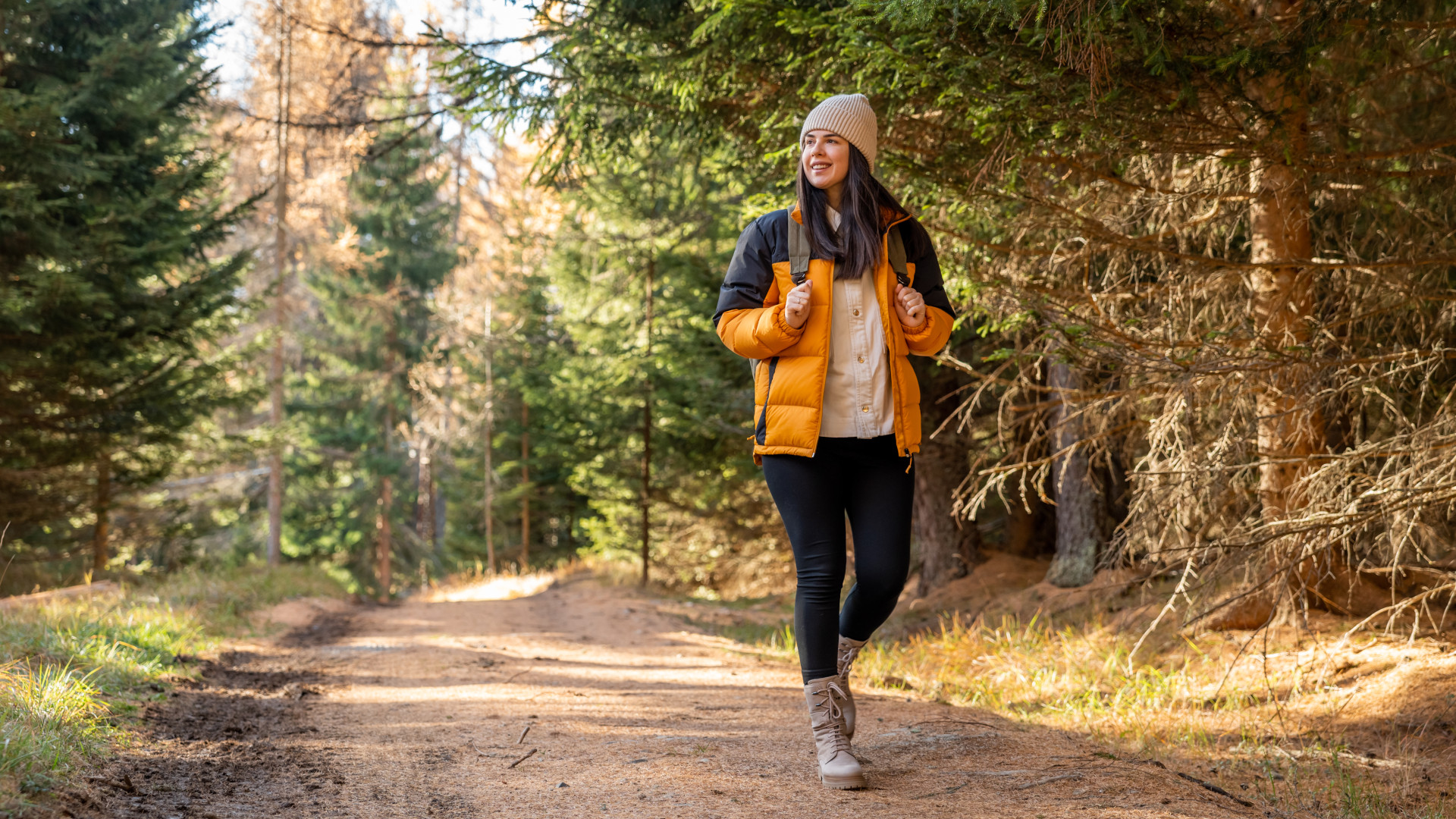What’s speed hiking: the outdoor exercise that builds stamina and full-body strength
It's also good for your mental wellbeing too


If you’re looking to spend more time outdoors, but are also keen to up your fitness levels, what about trying speed hiking? “It’s an approach somewhere between hiking and trail running,” says Dr. Suzanne Bartlett Hackenmiller, Chief Medical Advisor at AllTrails. “Generally, the goal is to cover the most distance and elevation change in the least amount of time, while exploring as much scenic terrain as possible.”
Green exercise is growing in popularity, with the hashtag ‘speed hiking’ accumulating over 19.000 posts on Instagram alone. For those who enjoy the benefits of spending time outside, but also want to get their heart pumping and build on their strength, this could be just the thing.
Intrigued? Here's everything you need to know about it.
What is speed hiking?
Speed hiking is a hybrid of hiking and trail running. “Speed hikers typically aim for a pace that is faster than walking but slower than running, with the happy medium of speed-hiking being around 3-5 miles an hour,” says Dr. Hackenmiller.
You may think it sounds quite similar to rucking or trail running. However, rucking requires you to have a weighted rucksack on your back and trail running is very much what it says on the tin, running on outdoor trails.
Benefits of speed hiking

1. It’s good for your mental wellbeing
Research has shown that green exercise has been found to enhance mental wellbeing more effectively than exercising in other types of environments. Plus, we know spending time in green spaces nurtures our mood and can help reduce stress and anxiety.
Get all the latest news, reviews, deals and buying guides on gorgeous tech, home and active products from the T3 experts
2. Builds strength and stamina
Speed hiking is a full-body workout; it tests your endurance levels and raises your heart rate (which means more calories burned). Your legs, arms and core are all working hard too to keep you stable and balanced while you move from A to B. Mix in different elevations and you’ll be working up a small sweat in no time.
3. Time efficient
Whether you’re looking to cover more ground in a short period of time of time, or you want to fit in a high-intensity workout that won’t take hours, speed hiking is ideal as it's easier to fit into your schedule.
How to get started

Although speed hiking technically requires no specific ‘equipment’, you do need to make sure that you’re wearing the right gear for the environment that you’re in, so you have the best experience possible. Keep in mind though, you want to keep things light and to a minimal, so that you can still easily pick up your pace.
Men's walking shoes and women’s walking shoes are lighter than boots, and will help you move faster, or there’s the option of a trail running shoe. These are best suited for less intense terrain, such as outdoor paths and easier ground in general. However, if you’re planning to head out to more rugged terrain, then a pair of the men's hiking boots or women's hiking boots is a better option. These will offer more protection for your feet and around the ankles.
In terms of clothing, again, light, breathable layers are your best friend – such as a base layer, a fleece jacket (if the weathers cold) and a waterproof coat – these will help you adapt to the changing weather conditions. Also, make sure you take a water bottle, as it's important to stay hydrated, but can easily be forgotten out on the trails, as well as energy snacks. Stow everything in a light backpack, such as the Matador Freerain28 Waterproof Packable Backpack.
Speed hiking for beginners
Below, Pitt Grewe, Head of Public Land Partnerships at AllTrails has shared some tips that you can take with you on your speed hiking venture. But before you head outside, he advises to spend five to 10 minutes warming up with some light stretching and mobility exercises. Try this 10 minute mobility routine for your hips and this upper body routine.
- To begin: Start your brisk hike, maintaining a challenging pace. Gradually increase your speed and intensity as your fitness improves.
- Interval Training: Incorporate short bursts of faster walking to increase intensity.
- Distance and elevation: Focus on increasing the distance and elevation of your hikes over time to continue challenging yourself.
- Cool-Down: Finish with a 5-10 minute cool-down, including stretching to improve flexibility and reduce muscle soreness.

Bryony’s T3’s official ‘gym-bunny’ and Active Staff Writer, covering all things fitness. She is a certified personal trainer and also a part-time fitness instructor. In her spare time, you will find her in her natural habitat - the gym - where her style of training is a hybrid of bodybuilding and powerlifting. Bryony loves writing about accessible workouts, nutrition and testing innovative fitness products that help you reach your fitness goals and take your training to the next level.